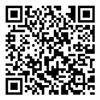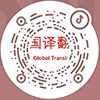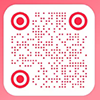Specific Solutions
Engineering Document Translation:
Accuracy First—for Safe, Compliant, and Executable Projects
In international engineering projects, from feasibility studies and design blueprints to procurement documents and maintenance manuals, high-quality translation is not just a linguistic service—it’s a critical foundation for project delivery, compliance, and risk control.
Engineering translation must go beyond “readable.” It needs to be executable, auditable, and technically precise.
I. What Types of Engineering Documents Require Translation?
Engineering translation typically covers documents from every phase of a project:
Design stage: technical drawings, structural specifications, BIM reports
Procurement stage: equipment lists, bid invitations, contracts, quotations
Construction stage: installation guides, safety manuals, construction planning documents
Operation & maintenance: O&M manuals, inspection records, failure reports, training materials
Compliance & administration: environmental assessments, feasibility studies, quality reports, certifications
These materials often integrate terminology from civil, electrical, mechanical, HVAC, automation, environmental, and structural engineering, sometimes within a single document.
II. Why Engineering Translation Requires a Specialized Approach
1. Terminology Accuracy Is Non-Negotiable
Technical terms must be precise and consistent. A mistranslation like confusing “bearing wall” with “load wall,” or incorrectly rendering "expansion bolts" could lead to errors in procurement, misinterpretation on-site, or safety risks.
Professional engineering translation adheres to international and local standards (e.g., ISO, GB, ASME, EN), and ensures correct usage based on the project's legal and technical context.
2. Complex Formatting with Text–Image Integration
Engineering documents often include:
CAD or DWG drawings with annotations
Technical tables, flowcharts, and schematics
PDFs, Excel files, Visio diagrams, and structured reports
This demands not only linguistic expertise, but also the ability to handle formatting, layout recreation, and technical markup, preserving the original structure for ease of use and compliance.
3. Strict Deadlines and Multi-Stage Deliveries
Engineering projects follow tight, inflexible schedules. Translations often must be:
Delivered in rolling batches
Synchronized with design or procurement timelines
Provided in multiple languages for stakeholders or regulators
Updated frequently during project iterations
This requires a provider with strong project management, scalable resources, and fast turnaround capacity.
III. Key Competencies of a Quality Engineering Translation Provider
| Capability | Description |
|---|---|
| Industry knowledge | Translators with engineering or STEM backgrounds understand both terminology and logic |
| Language precision | Grammatically accurate, semantically clear, and technically correct |
| Format handling | Proficient with AutoCAD, PDF, Excel, and diagram-heavy documents |
| Terminology management | Use of termbases and translation memory to ensure consistency across versions |
| Multilingual delivery | Support for English, Chinese, French, Russian, Arabic, and more |
| Quality control | Multi-person review process to avoid mistranslation, omissions, or formatting errors |
IV. Practical Considerations in Engineering Translation
Are units of measurement properly converted? (e.g., tons, psi, MPa, mm)
Are all drawing annotations translated, including titles, callouts, and legends?
Does the translation reflect local regulatory terms and codes?
Is there a terminology review or sample test before full rollout?
Can the provider handle rush or overnight work when deadlines shift?
These details are essential to ensuring that the translated content is usable, safe, and ready for implementation.
V. Final Thoughts: In Engineering, Precision Is Responsibility
Engineering documents aren’t designed to entertain or persuade. They’re built to instruct, define, and regulate. A mistranslation doesn’t just cause confusion—it can jeopardize construction, safety, or compliance.
That’s why engineering translation is not just a language task—it’s a technical responsibility.
When accuracy builds the foundation,
translation becomes part of the structure.


















